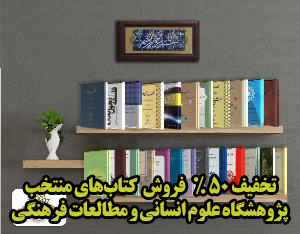فرم، ژانر و هارمونی در قطعه توکاتا اثر هرمز فرهت (مقاله علمی وزارت علوم)
درجه علمی: نشریه علمی (وزارت علوم)
آرشیو
چکیده
هدف اصلی این پژوهش بررسی فرم، ژانر، مد و هارمونی در قطعه "توکاتا" اثر هرمز فرهت است. اهمیت این قطعه از آن روست که آهنگساز ضمن استفاده از تم محلی (تم کُرَیشیم) با بهره گیری از زبان هارمونیکی نو و جنبه های ویرتوزیستیک ساز پیانو، قطعه ای نو را به رپرتوار این ساز در آثار آهنگسازان ایرانی افزوده است. پرسش این پژوهش بدین شرح است که "عوامل اساسی آهنگسازی و ارتباط آن با مصالح مدال در این اثر چیست؟" بدین منظور، پیش از پرداختن به قطعه "توکاتا"، با استناد به منابع کتابخانه ای مفهوم، پیشینه و نیز ویژگیهای اصلی این ژانر در دوره-های مختلف بررسی خواهد شد. قسمت دوم پژوهش، با روش تحقیق تحلیلی به بررسی مولفه های توکاتا و نیز فرم قطعه می پردازد. با وجود آزادی نسبی فرمال در ژانر توکاتا، می توان فرم این قطعه را سه بخشی مرکب دانست که بخش ها برگرد تم محلی کریشیم سازمان یافته اند. در ادامه، قسمت سوم به بررسی گوشه ها، مدها و ملودی اصلی و قسمت چهارم به رویکردهای هارمونیک در این اثر می پردازد. طبق بررسی انجام شده، می-توان نتیجه گرفت، آهنگساز در این اثر، تکنیک های موسیقی نئوتنال نظیر هارمونی کوارتال، کویینتال، تیرس غیرفونکسیونل و تیرس هایی با نت اضافه شده را متناسب با پتانسیل تم محلی و ژانر توکاتا بکار گرفته است.Form, Genre, and Harmony of Toccata Composed By Hormoz Farhat
The current study attempts to investigate the main compositional thoughts and innovative ideas of an Iranian composer, Hormoz Farhat, in the piece entitled toccata. The study divided into four sections. The first section associates with a brief history of toccata in western repertory and different approaches toward this genre. Appearing the term, toccata, in different contexts, from middle-ages to the present time, may lead to misconceptions about the genre. Thus, studying different concepts, and the main features of this genre in various styles such as virtuosic passages, fast moving arpeggios, extreme chromatism, sudden modulations (changing of tones), and imitative styles like having polyphonic sections in slow tempo is imperative. The rest of the paper mainly discusses compositional elements of toccata composed by Farhat. The second part of the current study, explores the genre, formal structure, and the themes’ function in the current piece. The piece can be described as a ternary form in which A section, by using B elements, prepares the atmosphere for appearing Koraishim theme and its development in B. Though composer states that only B section has been created based on a Persian mode (Koraishim), for making the piece coherent, A section also deals with motifs of the theme and Persian modes like Shure. Using Koraishim theme, and exploiting its rhythmic and motivic potential, the composer creates the piece based on the theme which is suitable for the genre of toccata. In other words, main features of this genre, mentioned previously, can be achieved by using this theme. Owing to composing the piece based on Persian folklore themes and the different approach toward modality in Persian music, the third part of the paper focuses on modal structure of the piece. The modality of the piece, in diatonic parts, mainly can be described as Shure and Dashti. It should be mentioned that Shure and Dashti have the same modality as Phrygian mode, if intervals are changed to equal well-tempered system. Nevertheless, the importance of some degrees (other than tonic-dominant relationships like those of western tonal system), intervallic system, and melodic patterns which determine the modality of Persian modes, differentiate between Phrygian and Shure. The last section of the paper deals with harmonic elements used in the piece. From harmonic point of view, the composer has used combination of neo-tonal composers’ techniques such as poly-tonality, quartal and quintal harmony, non-functional triads, and triads with added notes which can be seen in works of composers including Debussy, Bartok, Hindemith, and Prokofiev. In order to combine mentioned techniques, Farhat has used various elements. For instance, as examples in the study illustrate, the voice leading and counterpunctual motion of lines can justify the connection of triads and quartal chords or appearance of triads in a quartal context which do not damage the coherency of the piece from harmonic point of view. Using the Persian theme alongside these various techniques and combining them in this piece not only result in incoherency, but also result in an innovative musical language which is unique to Hormoz Farhat.




